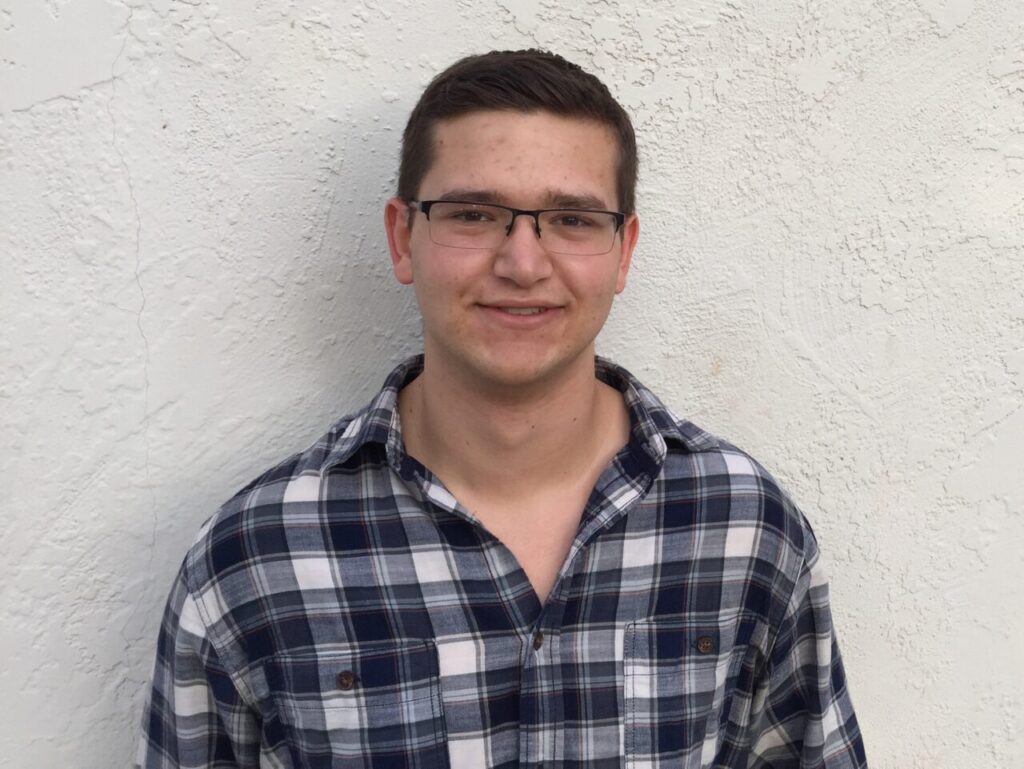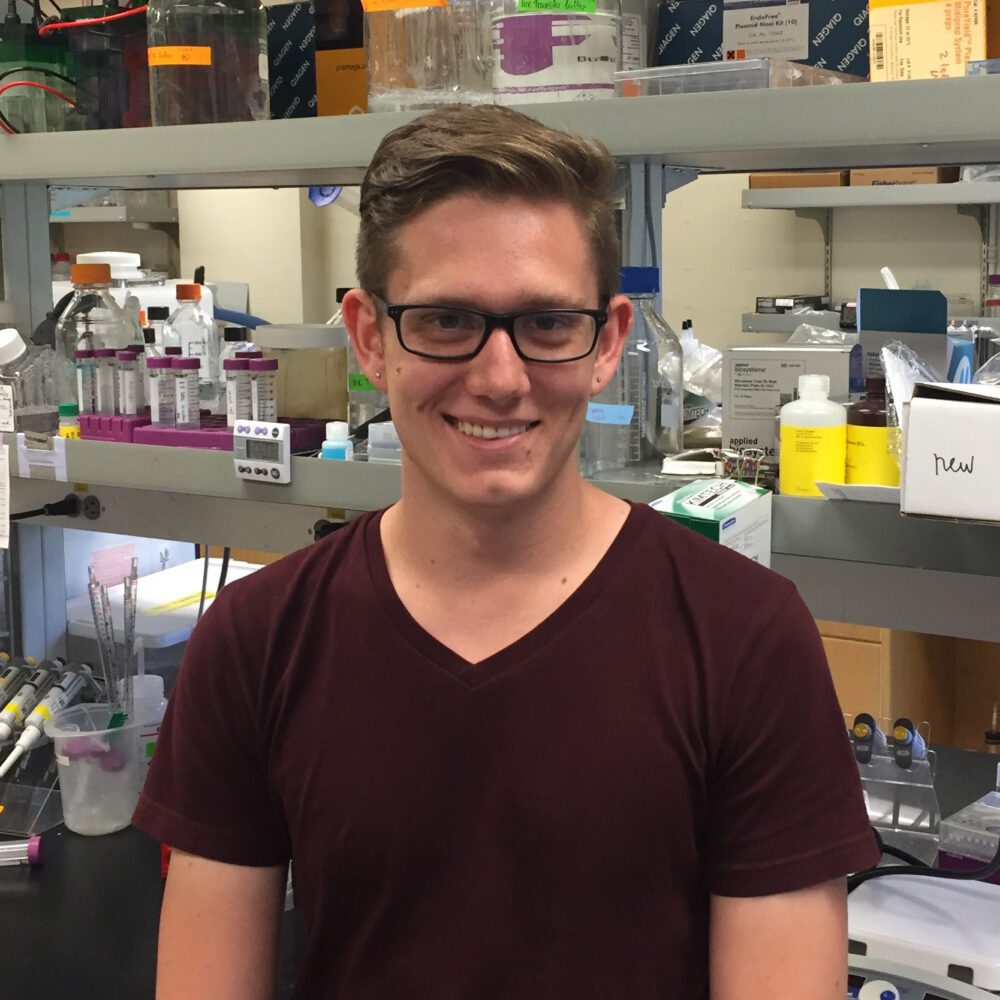Kayleigh Cook

My project centers on epoxyeicosatrienoic acids (EETs) which are located in endothelial and vascular smooth muscle cells. From previous studies, they have been shown to be potent vasodilators and though the receptor is not known, their mechanism is believed to rely on calcium activated potassium channels and the hyperpolarization of smooth muscle. In addition to vasodilation, EETs are known to help maintain cardiovascular homeostasis through anti-inflammatory effects and can protect against ischemia and hypertension. Discovering the receptors that control the potential benefits of EETs could lead to new therapeutic options […]
Alan Liu

The use of fossil fuels to produce fuels is leading to an increase in changes of global climate due to the large amount of carbon dioxide released. Fossil reserves are also becoming scarcer, so alternative energy sources such as those from biomass derived alcohols are becoming more important. It is known that some biomass derived alcohols, such as glycerol, can react with aldehydes and ketones to form acetals and ketals that are possible useful fuel additives. My research project will focus on probing the kinetics and mechanisms of the liquid […]
Leo Porter-Zasada

In this project, I will attempt to create a less expensive and more effective method to synthesize and separate chiral compounds in large quantities. Because a large percentage of biological molecules are chiral (i.e. they have non-superimposable mirror images), many bioactive and pharmaceutical compounds are also chiral, and separations and synthesis of these chiral compounds is a pivotal challenge in pharmaceutical research. To address this challenge, I aim to create an enantiopure chiral metalorganic framework (MOF) by introducing chiral additives during synthesis to induce bulk homochirality. Preliminary findings indicate this […]
Eugene Lo
A key component of successfully automating robots is localization: maintaining realtime knowledge of the robots’ positions and orientations in some local environment. Tools such as GPS can achieve reasonably accurate localization via absolute position estimates (e.g. a longitude, latitude measurement), but these absolute sensors often do not work well in indoor settings due to poor reception of the signal. As more and more robots are deployed to work in indoor environments such as households and factories, cost-effective and accurate localization for indoor settings becomes vital for enabling progress and maintaining […]
Alison Hoang

The heart, especially in adult mammals, is one of the least regenerative organs as evident in the ongoing battle against cardiovascular diseases. While higher mammals lack the ability to proficiently regenerate myocardial tissue, lower vertebrates, such as zebrafish and newts, experience a robust regenerative response even after major injury. Phylogeny then implies that higher mammals must have lost their cardiac regenerative potential sometime during their evolutionary history. The phylogenic distribution of cardiac regeneration in mammals is not well understood but could serve as an important platform to identify evolutionary pressures […]
Lynn Yang

The periodontal ligament (PDL), which surrounds the tooth in its bony socket, is unique amongst mammalian tissues as one of the only ligaments that is both innervated and vascularized. Nerves and vasculature are involved in inflammatory and sensory transduction processes in the PDL of patients who seek orthodontic treatments, such as braces, who generally undergo orthodontic tooth movement (OTM), or tooth movement in response to any non-physiologic force. However, OTM often incurs serious negative consequences, ranging from compromised oral hygiene and severe discomfort during treatment, to orthodontically-induced inflammatory root absorption […]
Stephanie Robinson
Virus-like particles (VLPs) are non-infectious viral capsids that can be engineered, and serve as a drug delivery scaffolds.The MS2 bacteriophage is a VLP that has already proven to be a robust and mutable VLP by the Francis group. I am utilizing the same techniques to another VLP, the Hepatitis B virus (HBV), to identify if this is a universal quality that can be applied to immunogenic VLPs that affect humans. I aim to substitute each position of the of the HBV polypeptide with all possible combinations of the 20 natural […]
Alvin Wan

Deep Reinforcement Learning (DRL) has seen state-of-the-art results with Atari games, spoken dialogue systems, and a differentiable neural computer. However, excessive amounts of computer power are required to attain such results. My work concerns potential simplifications of DRL so that more advanced tasks are feasible, leveraging alternative evolutionary strategies with deep function approximators and evolutionary strategies with linear function approximators.
Malcolm Crawford

Dopamine is an important neuromodulator, and dysregulation of dopaminergic function is involved in many neurological disorders, from Parkinsons disease to addiction. The mTOR pathway, a ubiquitous signaling pathway which regulates cell growth and survival, plays an important role in dopamine neuron fate. By manipulating mTOR signaling in dopamine neurons via cell-type specific deletion of the Tsc1 gene, a negative regulator of the mTOR complex, I am examining how changes in cell morphology and protein expression levels are impacted by mTOR hyper-activation. This work can contribute to a better understanding of […]
Jordan Xiao
At the level of transcription, gene expression is controlled by activator and repressor proteins (transcription factors) which bind to DNA in concentration-dependent manners. Current models in biophysics depict transcriptional regulation as an input-output function where the output rate of mRNA synthesis depends on the concentrations of input transcription factors. Our project seeks to evaluate and improve these quantitative models by developing optogenetic techniques to systematically perturb the natural system, in this case the common fruit fly embryo. We fuse a special light-sensitive protein to maternal transcription factors, then use different […]